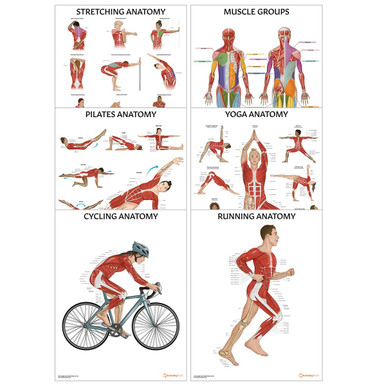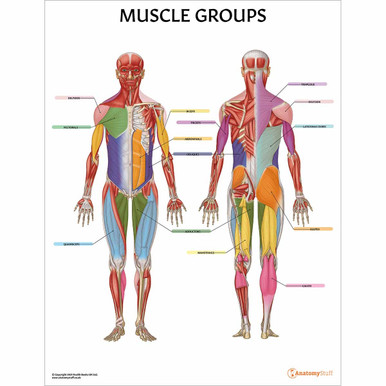Cycling Anatomy
What it takes to enhance cycling power, how it strengthens your muscles and boosts your stamina will be discussed in this article.
Why is it important to learn? Because the key aspect of knowing sports biomechanics is to enhance the power of muscles and avoid any chances of injury. Recreational, competitive, and rehabilitating cyclists and physiotherapists benefit from knowing the anatomy and biomechanics of cycling.
What is Cycling Anatomy?
The primary power-producing muscles are the quadriceps, hamstrings, and gluteals in cycling. At the same time, the stability on a bike is maintained by the calf muscles, abdominals, and erector spinae, in conjunction with upper body muscles. Cycling anatomy focuses on learning the function of these muscles and relevant body parts, to improve cycling capabilities and lessen injury. It aims to improve the cyclist’s interaction with the bicycle, ensuring posture comfort and pedalling efficiency. It also aims to use scientific knowledge and research to design products to achieve better comfort and performance.
What are the Clinical Implications and Points of Contact in Cycling?
During cycling, three areas of the body come into contact with your bicycle: the pelvis on the saddle, hands on the handlebars, and feet on the pedals. It is also essential to know that these parts face extreme pressure and compression during long cycling durations, causing numbness, pain, and weakness (e.g. cyclist’s palsy). The number of people opting for cycling, whether for leisure, exercise, transport, or profession, is increasing globally. As it supports a healthy life, reducing the risk of obesity and other disorders, the global bicycle market was valued at USD 54.44 billion in 2020. With such a large number of people cycling, it also increases the chances of developing an injury, so it is essential to understand the anatomy and biomechanics of cycling.
What are the phases of cycling?
In cycling, there are two phases, the power phase and the recovery phase.
The power phase is from 12 o’clock till six on the bottom bracket and is a phase where all the force is generally generated to propel the bike forward. The cyclist utilises their hip extensors (gluteus maximus muscles) to initiate the power phase until 3 o’clock, and then the knee extensors get activated, propelling it from point 3 to 5 o’clock. This phase generates the most force for pedal stroke, particularly while climbing on steep gradients. Due to this position, the rectus femoris can shorten, leading to anterior hip pain and discomfort around the patella. The next part in the power phase is from position 5 to 6, and in it, the plantar flexion occurs by gastrocnemius, which causes the toes to point outwards.
The second phase is the recovery phase, from 6 to 12 o’clock. In contrast to the name, not all the muscles switch off during this phase; they are just not as active as the power phase. The tibialis anterior draw the toe upwards towards the shin, from point 6 to 8 (dorsiflexion). The hamstrings (semimembranosus, semitendinosus, and biceps femoris) pull the heel upwards towards the buttocks from point 8 to 10 o’clock. After that, the hip flexors (iliacus and psoas) take up the role and finish the pedal strike by 12 o’clock.

Free PDF Downloads
View AllWhich joints are involved, and what are their roles?
The joints of the upper limb mainly play a role in holding and controlling the direction of the cycle, while the axial skeleton and torso play their part in balancing the body on the bike. The main active role is that of the lower limb complex; the pelvis is the start. The following joints of the lower limbs play their part in cycling:
• The hip allows and guides hip flexion, extension, and some degree of rotation.
• The knee joint acts as a lever to the femur, the longest bone in the body, and creates a large amount of torque. Patella also plays its role in transferring the force from the upper limb to the lower limb.
• Also, there is the ankle joint, which facilitates dorsiflexion and plantarflexion in cycling.
Conclusion
Cycling is a very healthy activity practised by many individuals worldwide, making it vital to know its anatomy. The upper limb provides holding, the torso helps balance, and the lower limb plays its part in pushing the pedals. There are two phases in cycling, the power phase and the recovery phase, the joints and muscles of the lower limb are primarily involved in these phases. Due to its vast application, knowing the basic anatomy and mechanics of cycling helps avoid injuries, increase efficiency, and design more ergonomic bicycles.
Related products
View All














